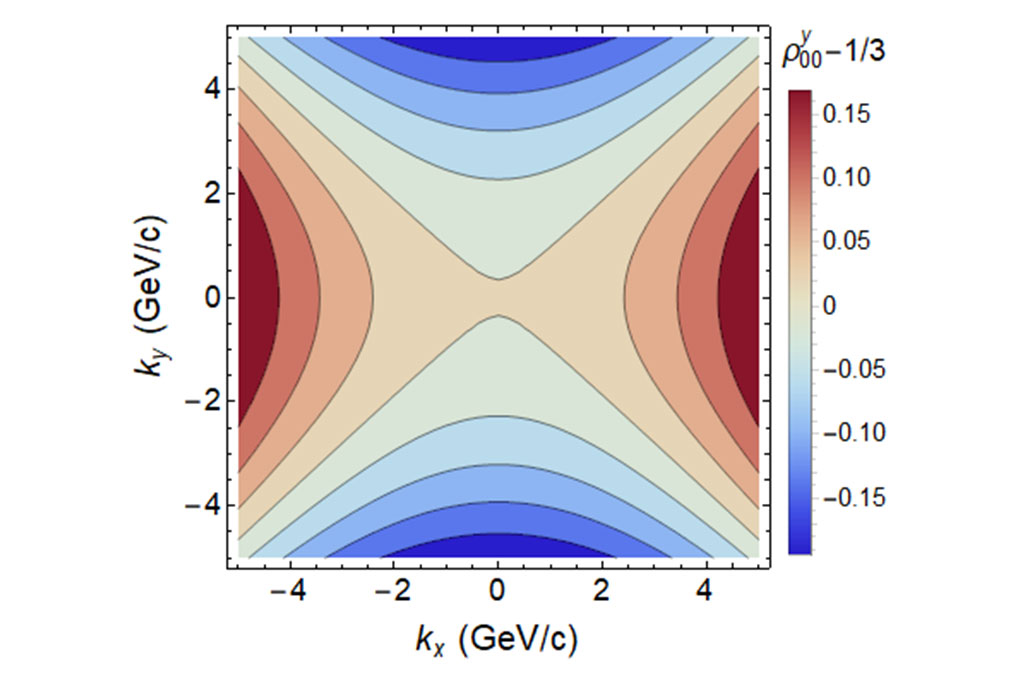NSD’s Xin-Nian Wang and collaborators have published new insights into the strong force fluctuations using the spin alignment of vector mesons in heavy-ion collisions.
Xin-Nian Wang, a senior scientist in the Nuclear Theory Group in Berkeley Lab’s Nuclear Science Division (NSD), and his collaborators have recently published new research (out today in Physical Review Letters) that explains the spin alignment of vector mesons in heavy-ion collisions, as observed by the STAR Collaboration at the Relativistic Heavy Ion Collider (RHIC).
The group’s new findings indicate a previously-unknown influence of the strong force, including a way to utilize spin alignment as a way to measure local fluctuations of strong force fields at subatomic distances. NSD’s Relativistic Nuclear Collisions (RNC) experimental research group is a member institute of the STAR Collaboration, which has recently published many groundbreaking results on spin dynamics in heavy-ion collisions, as well as the observation of the global spin polarization of hypernucleons as predicted by Wang (and collaborator Zuo-Tang Liang) more than a decade ago.
“Spin” is an intrinsic quantum property of an elementary particle related to its internal rotational symmetry. The particle’s magnetic moment (like a small magnet) is proportional to its spin and reflects its electromagnetic property. Interaction between the magnetic moment and magnetic field leads to the particle’s spin polarization, which in turn is determined by the direction and strength of the magnetic field. This is how the magnetic sensors work, and this same phenomenon also happens in collisions of atomic nuclei at a femtometer scale (1/10,000 of atomic size), but with quarks as small strong magnets interacting with the fluctuating strong force fields.
The team found that by measuring the spin alignment of the phi vector meson, whose constituent particles (strange quark and anti-quark) are polarized by the strong field, they could extract local fluctuations of the strong force fields. The research sheds new light on the non-perturbative properties of strong interactions and will lead to further investigations of strong field interactions in matter.
Learn More
Spin alignment of vector mesons in heavy-ion collisions
July 25, 2023 / Phys. Rev. Lett.
Authors: Xin-Li Sheng, Lucia Oliva, Zuo-Tang Liang, Qun Wang, and Xin-Nian Wang
‘Unbelievable’ Spinning Particles Probe Nature’s Most Mysterious Force
February 2, 2023 / Allison Parshall / Scientific American
Pattern of Global Spin Alignment of ϕ and K*0 mesons in Heavy-Ion Collisions
January 18, 2023 / The STAR Collaboration / Nature
Data Reveal a Surprising Preference in Particle Spin Alignment
January 18, 2023 / BNL News
